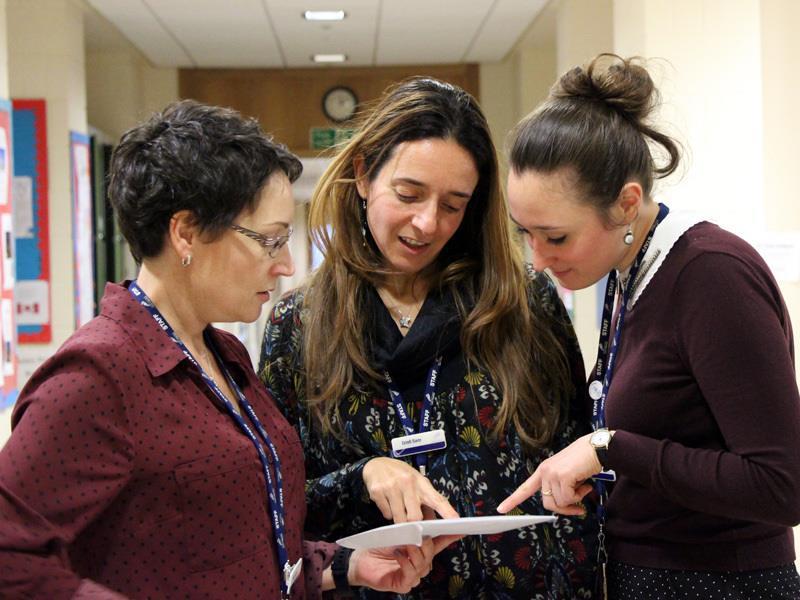International School Aberdeen (ISA) is a learning environment not just for students. Here, ISA tells us how they adapted training to stay in control during an out-of-control year.
“International School Aberdeen (ISA), like all schools across the country, was given the order in March 2020 to close its buildings for a virus that didn’t even have a name at the beginning of the year and had only started to make the news the month before.
“The global pandemic saw organisations having to radically change their operations over night. Face-to-face interaction was very quickly replaced with a hazy idea of what they could and couldn’t do.
“The challenge then was not to implement a pre-existing vision, but to apply something new during extremely challenging times amidst unfamiliar territory. Which leads to the fundamental question: ‘How do you train your workforce for the unknown?’
Adapting to change
“Over the last 18 months, International School Aberdeen has not re-evaluated the training it provides, but rather the way in which it delivers training.
“It’s moved from a top-down model of standardised training to a collaborative model in which learning is bespoke and incremental.
“As an international school, ISA is profoundly designed for adapting rapidly to change.
“Within a day of lockdown being announced, ISA had taken the bold decision to transfer face-to-face learning to virtual learning.
“By drawing on its global connections, the school quickly integrated online models of learning that had been running in the Far East the month before the UK lockdown. This included technological tools, and online classroom management and child safety protocols.
“Radical as this change was, it was a very streamlined process.
“Teaching staff envisioned an International School Aberdeen online classroom, however, the unknown challenges were yet to be seen.
Finding a long-term solution for online learning
“The experienced teaching staff began to realise they couldn’t simply transfer the practices of a physical classroom to a virtual space.
“Despite virtual lessons working well with regular lessons and courses being taught with success, ISA’s teachers found that learning activities were severely limited online.
“Unless the school diversified, International School Aberdeen online lessons alone were not a suitable long-term alternative.
“The first hurdle to overcome was this recognition that a change was required, and put it into action.
“Traditional training is often built on the deficiency assumption that there is a task the employee isn’t trained to do yet, therefore the employer provides the training required.
“However, this method is not ideal for an organisation such as ISA which is focused on innovation and staff development.
“New situations, by their very nature, are difficult to predict and the skills needed to thrive particularly so. If the vision for change is confined to management rather than those who are implementing it, success will be limited.
“By taking a proactive approach immediately after lockdown was announced, ISA stayed ahead of the game. It anticipated areas where it would need to step up to train staff in order to support its community of 500 students and their families.

How the International School Aberdeen Training as Sharing model works
“A tech chat room was created – a space where teachers could chat and ask tech related questions for their colleagues to answer.
“It was also a space where they could openly discuss new and gain valuable advice and feedback.
“ISA’s in-service day transitioned to a ‘skills share’ event whereby teachers could demonstrate any recent changes in technological practices and learn from each other.
“This Training as Sharing model had a number of advantages for taking International School Aberdeen online:
- All staff wanted to learn more about the role of technology in education – the focus was on creating something new as opposed to making up for deficiencies.
- Staff were being trained by peers who could relate to the learning process.
- Learning was adaptive, timely and relevant.
- Training was broken down into bite sized, easy to digest segments with staff moving forward at their own pace.
“Training as Sharing didn’t replace existing models. ISA introduced new software with formal, standardised sessions by external providers, but it enhanced the overall culture of learning.
“Staff alternated between learner and trainer and built their own sense of value.
“They were empowered to manage how and when to engage their training which encouraged feelings of autonomy at a time when they were being robbed of all sense of control.
“At ISA, skill sharing initiatives and the use of chat rooms to examine best practice will continue as pandemic restrictions ease.
“However, it is important to note that these training methods were not innovations that were plucked out of nowhere.
“ISA is a school with a mission for maximising the potential of each student and encouraging lifelong learning. Graduates thrive in a fast changing, globalised world – it is no wonder that ISA does itself.”
Find out more about the International School Aberdeen online and in-person models of learning – browse the ISA website and get in touch with the school directly.










